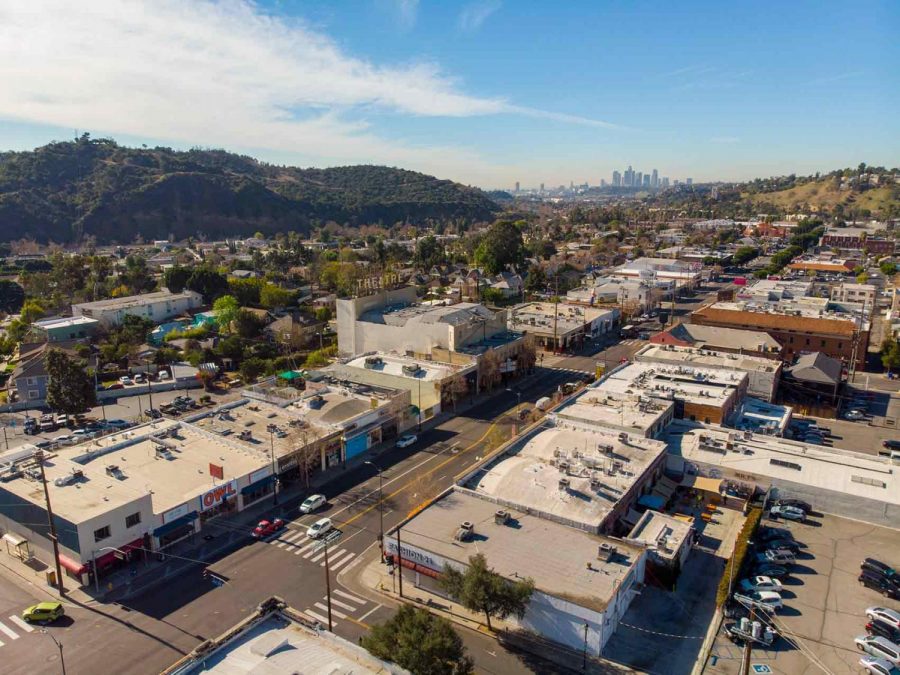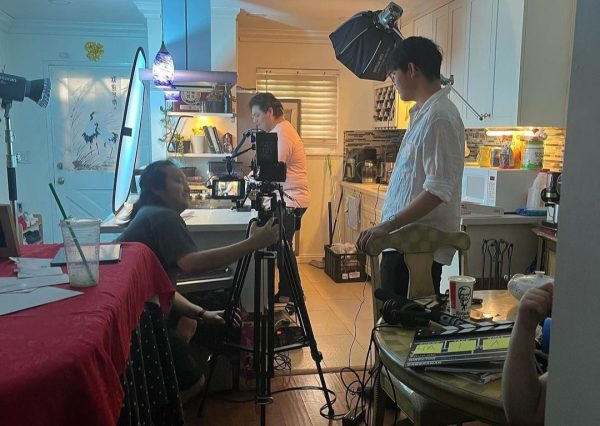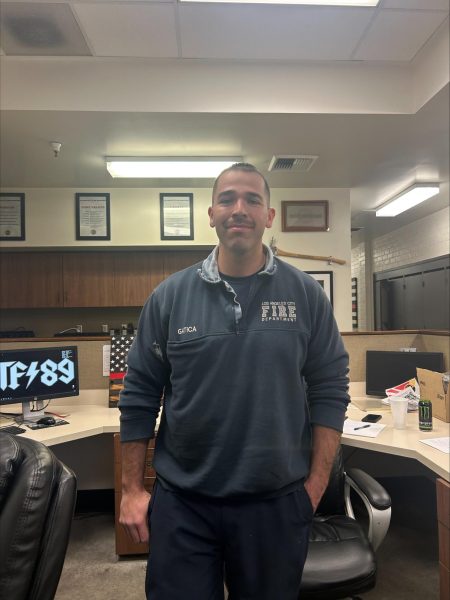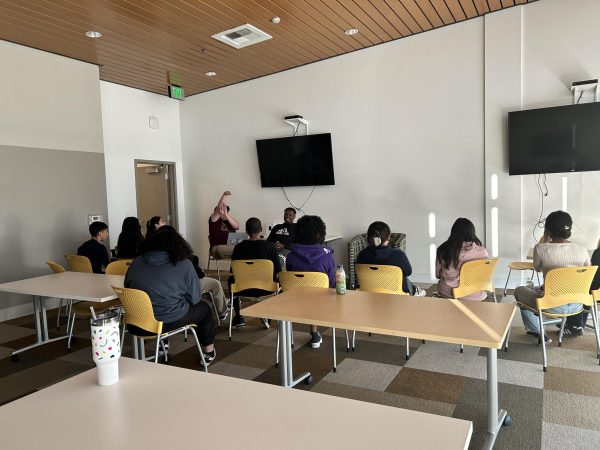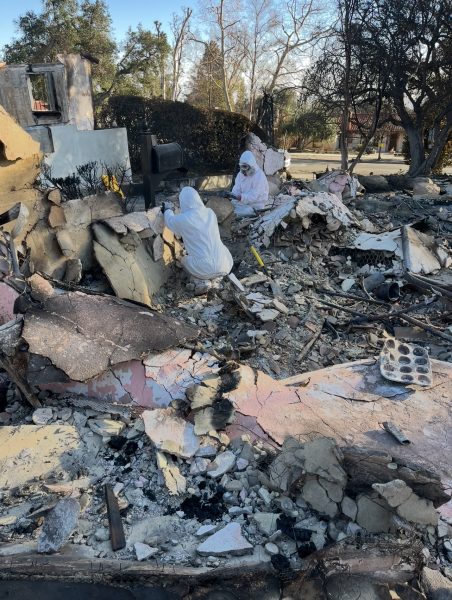Developers allegedly skirt laws, razing beloved park in Northeast LA
Unwanted land. A spiritual oasis. A development opportunity. A wildlife corridor known as the Emerald Necklace.
These are the various ways Poppy Peak, a hillside area in the northern park of Highland Park, has been described.
Unbeknownst to most residents, and they say without proper notice, construction commenced in 2019 on the area, which spans 7.5 acres over 16 parcels of land, and the developer apparently skirted environmental laws.
Although a state law, the California Environmental Quality Act, requires rigorous reviews of the impact of bigger projects, residents allege developers have gotten around the law by breaking up the project into smaller parts.
This is particularly egregious to the Save Poppy Peak organizers because they report on the site that the area is in desperate need of parks: “Approximately 66% of park land in Highland Park is located east of the 110 Freeway and not easily accessible to most residents. Garvanza Park, the nearest park to Poppy Peak, is a 20-minute walk.”
Now, the “Save Poppy Peak” project seems to be the residents’ last hope in trying to save this historic place from outside control. The coalition was founded with First Nation members and their guidance.
Gentrification fuels Poppy Peak development
The neighborhood surrounding Poppy Peak was developed between 1910 and 1930.
Longtime resident John Collinson feels that Highland Park is moving away from preserving parks to making way for more development.
“I don’t think anyone has heard about Highland Park until gentrification started. People saw an opportunity to make a buck,” he said.
Organizer and photojournalist John Urquiza, who studies gentrification in L.A., said development and growth in the east and northeast areas of the city and county are exacerbating rising housing prices and leading to tenants’ rights, land use, discrimination, health, and cultural theft issues as well as homelessness.
The demise of Poppy Peak is another example of the impact of gentrification, he added.
“We have had hillsides that are similar to Poppy Peak up in Lincoln Heights, where there’s a 21% poverty rate [compared to a national rate of 11%], and you want to build an 8,000-square-foot mansion,” Urquiza said.
On the flip side, Urquiza said, more development in Poppy Peak, especially homes sold for more money than the houses surrounding it, can increase property tax for those in the neighborhood, considering Proposition 13. Prop. 13 is the landmark 1978 state property tax law that effectively allows many longtime homeowners to pay taxes on what the value of their home was when they bought it, not much higher recent valuations.
More tax revenue could potentially benefit the community with “more investment in education, infrastructure, and other vital services that strengthen local communities and aid long-term economic growth,” according to the Center on Budget and Policy Priorities. In addition, supporters of such developments say they’re needed to address the area’s housing needs and a greater supply of housing is the only thing that can help stabilize prices.
The race and ethnicity of Highland Park residents have changed dramatically over the years.
“At one point, Highland Park was a very white neighborhood in the 70s. We had white flight, and basically everybody on the East Side and Highland Park moved into the valley because that’s where the new housing tracts would be built. So with that white flight, Latinos suddenly had a new housing stock, and so they moved east, and they moved into Highland Park,” Urquiza said. “This was like moving to the Beverly Hills of East L.A. So it was like a nice neighborhood, and everybody had a lot. They built their own culture here for that time period. And now, white folks are moving back.”
Poppy Park helps offset area pollution
Collinson, who has lived in Highland Park for 27 years and helps nonprofit groups fundraise, said Poppy Peak means a lot to the community, especially longtime residents.
“We feel that these are the things that are really important to our community, to have a place you can walk to and you can connect with nature,” he said. “We are living amid a growing climate and pollution crisis. Green spaces and lush tree canopies cool our communities and filter pollution. Recreational space in an extremely park-poor neighborhood provides opportunities for people to exercise and connect with nature.”
John Vangelisti, a pharmacy technician who has lived in Highland Park since 2008 while attending elementary school and officially moved back in 2001, said the neighborhood needs Poppy Peak for health reasons.
“Poppy Peak is [crucial] for our health. We live in a park-poor community, and we need these open spaces. We need to think about open spaces differently, taking into consideration…the effects of the climate crisis,” Vangelisti said.
Evading state environmental law
The developer who owns 16 contiguous parcels of Poppy Peak is attempting to build two to three homes at a time using the “by right” statute, which allows developers to build on infill properties as long as the constructed homes meet the City of L.A Department of Building and Safety guidelines, according to Collinson.
“A project this large or even half the size or even four houses would [typically] require California Environmental Quality Act review, basically a time-intensive, expensive comprehensive environmental report for the scope of the entire project, not just phase I. Under CEQA, there is no distinction or acceptance of phases in a project. It’s all or nothing essentially,” Collinson said.
Cutting a bigger project up into smaller ones is one way the developers may be skirting CEQA, which violates the spirit of the law. The 2021 CEQA Statute and Guidelines states that “ a project may not be divided into smaller projects to qualify for one or more exemptions pursuant to this article.”
We “firmly believe that the developer is piecemealing the projects to skirt proper CEQA review that would certainly be triggered were the project to be considered as a whole,” according to a letter in May from the Community Forest Advisory Committee to the Los Angeles Board of Building and Safety Commissioners. “Recently obtained correspondence between the developer and LADBS from Dec. 15, 2017, identified the construction permit applications for 6250, 6254, 6258, and 6262 E. Annan Way as Phase One of a larger project that could include the construction of as many as 40 houses.”
Collinson said the developer has already built two homes and has “four open construction permits, and he’s planning to build more on the north flank of Poppy Peak, which has trees that are 60 to 200 years old.”
According to the County of Los Angeles, oak trees are protected by state law, but builders can get approval to replace them with four saplings.
Collinson said the exemption is “absurd” in light of the climate and pollution crises: “Four saplings will likely not survive and would take 50 years to replace the function of the existing mature trees.”
Since the construction started, Collinson and other residents have pushed the city to rethink the development.
“We think that we are legally correct about what’s going on here, and we are just hoping that we can get enough traction in the city,” he said.
The neighborhood council wrote the city a community impact statement in March.
“We believe the developer, Poppy Peak 26 LLC, is attempting to evade California Environmental Quality Act restrictions by piecemealing a large development through incremental infill construction of three or four houses at a time,” reads a letter from Duncan Gregory, president of the Historic Highland Park Neighborhood Council. “Together, these 16 parcels comprise seven acres spanning historic Poppy Peak, Highland Park’s largest remaining greenspace and a tributary to the Arroyo Seco,” which is a 24.9-mile-long seasonal river, canyon, watershed, and cultural area in the county.
Gregory also said in the letter that the developer was “clearly encouraging quick review and approval” for the first four homes then trying to “circumvent engineering safeguards to ensure the integrity of each hillside parcel and structure built.
Other ways to address the situation haven’t worked.
For instance, Collinson said county building and safety inspectors went to the development site before the first two homes were done, but it’s “not the inspectors’ jobs to get involved with CEQA issues when the houses are being built ‘by right.’”
Representatives of Poppy Peak 26 LLC could not be reached despite three phone calls and one text.
Poppy Peak has been called a “Wild West” for developers that has marginalized the voice of residents who have lived in Highland Park since it was considered “a very dangerous neighborhood and was neglected by the city,” according to Collinson.
He added that he hopes city council members step in to help.
“I would like to see our elected officials have a vision for what they’re going to do,” he said. “These are natural assets that are community assets that everyone should have access to, a place to connect with nature.”
A correction was made on September 2, 2022 correcting a source’s title.

Mia Alva is a fourth-year journalism major who started for the University Times in fall 2020. She is a reporter and the editor-in-chief for the UT who...

